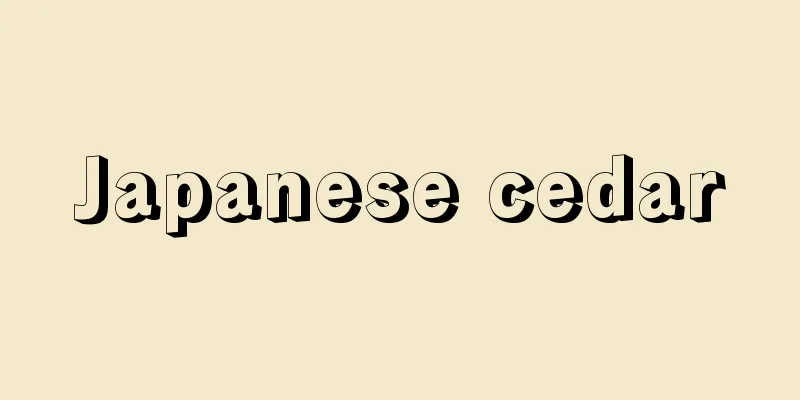The priest and the boy

|
Folk tales. A group of jokes with the theme of subordinates outwitting superiors with their wits. This is a type of witty tale, and tells the story of a monk and a boy. It is a joke that originally developed in temple life, and was likely spread among the general public through the preaching of temple monks. In the early Kamakura period, "Uji Shui Monogatari," a tale about the cleverness of a temple boy appears, and in Muju Hoshi's "Shasekishu" (1283) and "Zodanshu" (1305), the main story of "the monk and the boy" already appears. They can also be found in the back of the "Sungyu Ekotoba" (Illustrated Story of the Swift Bull), transcribed by Gosukoin, and in "Seisuisho" (1628), which shows that they were fairly well known by the general public during the Muromachi period. The themes of the stories include the stinginess of the priest, the breaking of the precepts of the priest, and the teachings of the priest. "Candy is Poison" from "Shasekishu" depicts the stinginess of the priest. The priest eats the candy alone, saying that it is poisonous if a child eats it. While the priest is away, a young monk eats the candy and breaks the priest's treasured water jar. When the priest returns, the boy cries, saying that he had broken the water jar and had eaten the candy in the hope of dying, but he did not die. "The egg is a white eggplant" is a tale of a temple monk breaking the precepts. The monk boils a chicken egg, eats it, and tells the boy that it is a white eggplant. The boy hears a chicken crowing and says that the parent eggplant is crowing. "Sweetfish are razors" is another similar tale. The monk calls the sweetfish a razor and hides it before eating it. When crossing a river, the boy sees a sweetfish and tells the monk that he sees a razor swimming in it. These two examples appear in Zatsudanshu. Among the stories of breaking the precepts are also humorous sexual tales that deal with rape. "The Horse's Lost Item" is an example of a witty tale that puts a twist on the teachings of the monk. The monk goes out on horseback. He drops his hood, but the boy doesn't pick it up. When the monk tells him to pick up anything he has dropped, the boy picks up the horse dung. This appears in the back of the paper of the Shunyu Ekotoba. The witty tales of the Edo period monk Ikkyu are a literary culmination of this type of joke. There are jokes in Korea and China that are equivalent to "The Priest and the Boy," and in some cases, there are specific similar stories, such as "Candy is Poison." Europe also has a group of jokes about "The Pastor and the Sexton." The relationship between the clergy, who were in charge of temples and churches, was also a good source of humor in society. [Yo Kojima] Source: Shogakukan Encyclopedia Nipponica About Encyclopedia Nipponica Information | Legend |
|
昔話。目下の者が目上の人を知恵でやりこめることを主題にした一群の笑話。いわゆる頓知話(とんちばなし)の部類で、和尚と小僧の話になっている。もともと寺院の生活のなかで発達した笑話で、寺僧の唱導によって、民衆のなかに広まったものであろう。鎌倉初期の『宇治拾遺(うじしゅうい)物語』には、寺の児(ちご)の知略を主題にする説話が現れ、無住(むじゅう)法師の『沙石(しゃせき)集』(1283)や『雑談(ぞうだん)集』(1305)には、すでに「和尚と小僧」のおもな例話がみえている。後崇光院(ごすこういん)書写の『駿牛絵詞(すんぎゅうえことば)』紙背文書(もんじょ)や、『醒睡笑(せいすいしょう)』(1628)にも散見し、室町期にはかなり一般に知られていたことがわかる。例話の主題は、和尚のけち、和尚の破戒、和尚の教えなどがある。『沙石集』にある「飴(あめ)は毒」は和尚のけちを描く。子供が食べると毒だといって、和尚が一人で飴を食う。和尚の留守中に、小僧は飴を食べ、和尚秘蔵の水甕(みずがめ)を割る。和尚が帰ると、水甕を割ったので死のうと思って飴を食べたが死なないといって泣く。「卵は白茄子(しろなす)」は、寺僧の破戒譚である。和尚が鶏卵をゆでて食べ、小僧に白茄子と教える。小僧が鶏の声を聞き、白茄子の親が鳴いているという。「鮎(あゆ)は剃刀(かみそり)」もこの同類である。和尚が鮎を剃刀と称して隠して食べる。川を渡るとき、小僧が鮎を見て、和尚に剃刀が泳いでいるという。この2例は『雑談集』にみえる。破戒譚には、女犯(にょぼん)を扱った性的な笑話もある。「馬の落とし物」は、和尚の教えを一ひねりひねった頓知話の例である。和尚が馬に乗って外出する。頭巾(ずきん)を落とすが、小僧が拾わない。落としたものは拾えと教えると、小僧は馬の糞を拾う。これは『駿牛絵詞』紙背文書にある。江戸期の一休和尚の頓知話は、この種の笑話を、文学的に集大成したものである。「和尚と小僧」に相当する笑話群は朝鮮や中国にもあり、「飴は毒」のように、具体的に類話が分布している場合もある。ヨーロッパにも「牧師と寺男」の一群の笑話がある。寺院や教会を預かる僧職の主従は、社会的にも笑話のかっこうの素材であった。 [小島瓔] 出典 小学館 日本大百科全書(ニッポニカ)日本大百科全書(ニッポニカ)について 情報 | 凡例 |
Recommend
GARIOA EROA Fund - GARIOA EROA Fund
A general term for "Government and Relief in ...
Kolomna (English spelling)
A city in the Moscow Oblast in western Russia. A r...
kleśa (English spelling) klesa
…The original Sanskrit word kleśa is the noun for...
Principal component analysis - Principal component analysis
It is abbreviated as PCA. It is a multivariate ana...
Autonomous Legislation - Jichirippo
This refers to the enactment of laws by local gove...
Teachers' Right to Education
...As a historical concept and in legal theory, i...
American Scene Painting
A general term for paintings depicting scenes from...
not straight
…a penalty kick is awarded to the not responsible...
Sotogahama
A town in the northern part of the Tsugaru Peninsu...
Hosokawa paper
A strong, thick, handmade washi paper made from pa...
Companion literature - Douhansha bungaku
A term used in Soviet literature of the 1920s to r...
《Medical Commandment》 - Ikai
...His patients included Goethe and Schiller, he ...
Sophistication - Kibenha
Please see the "Sophist" page. Source: ...
One-way flow - Katanagare
A type of roof shape in which the slope flows down...
Vulgarized materialism
Also known as mechanistic materialism. A materiali...

![Muroto [city] - Muroto](/upload/images/67ccfd9504869.webp)







